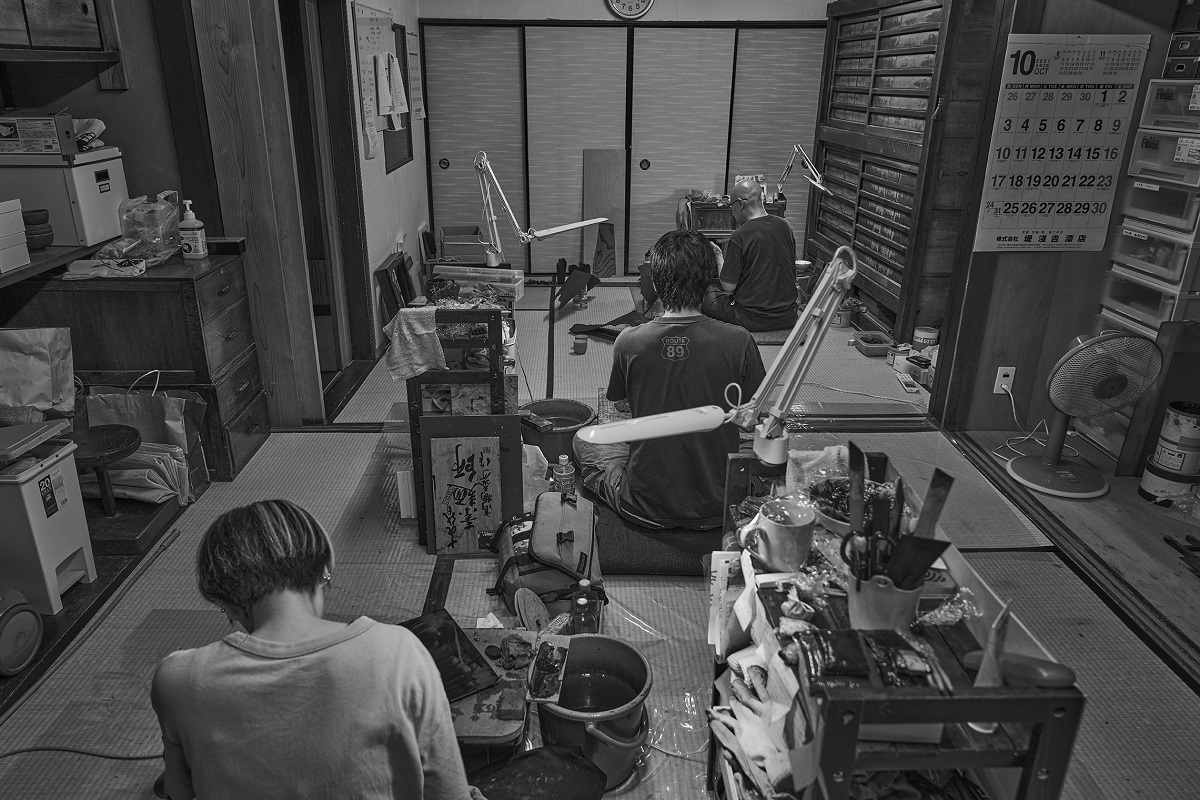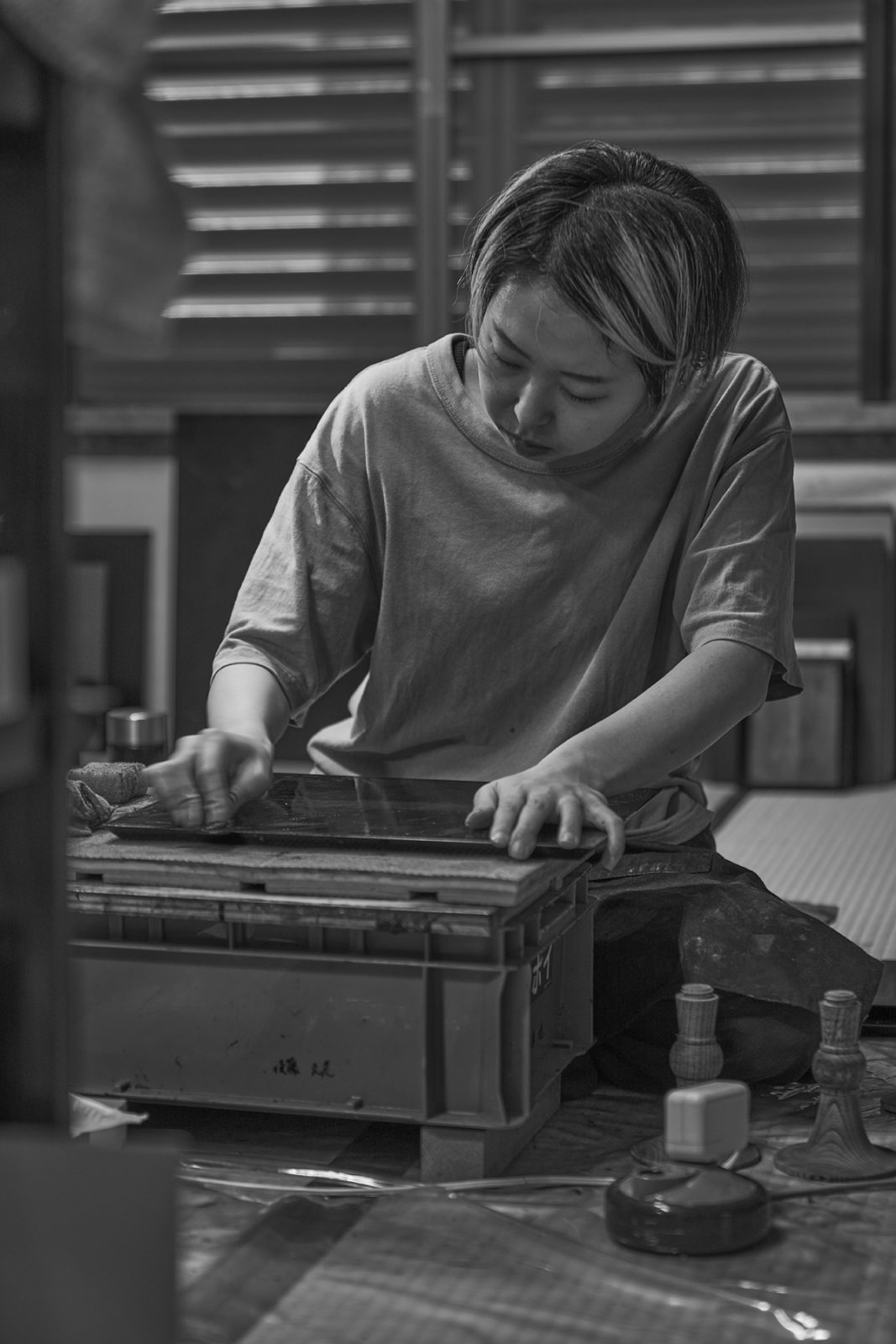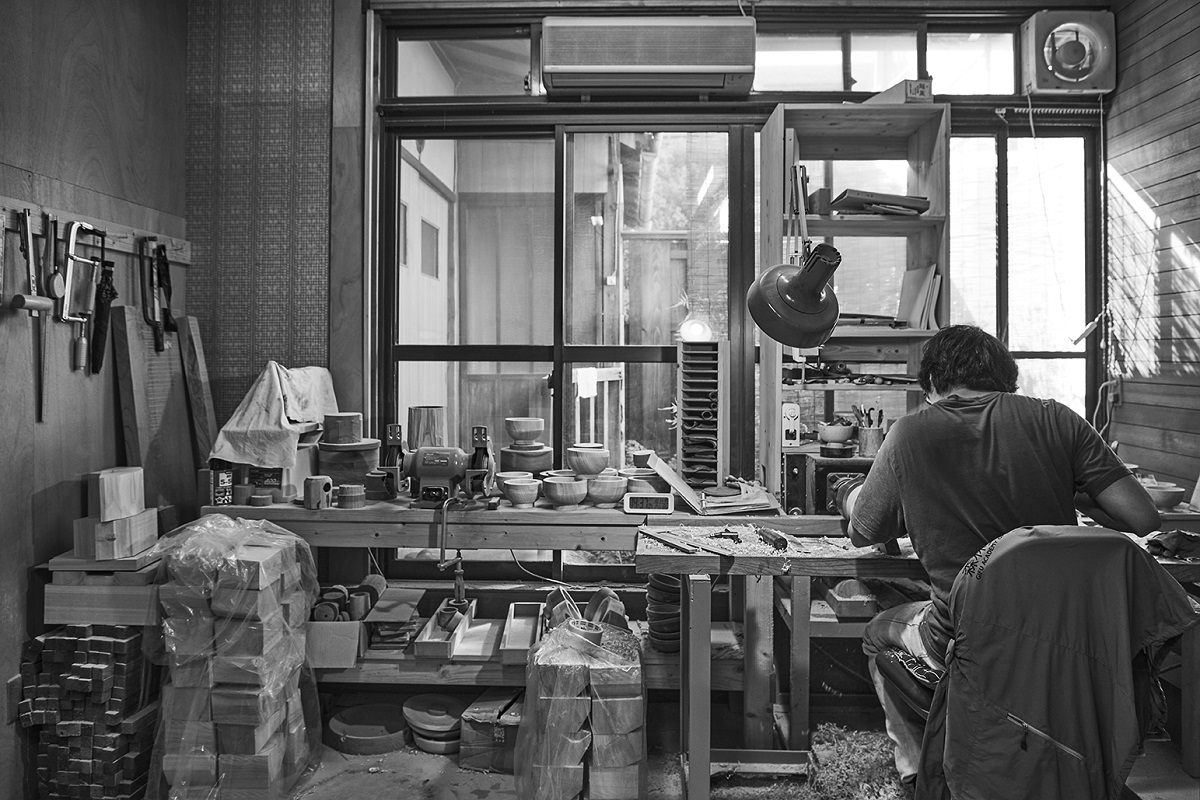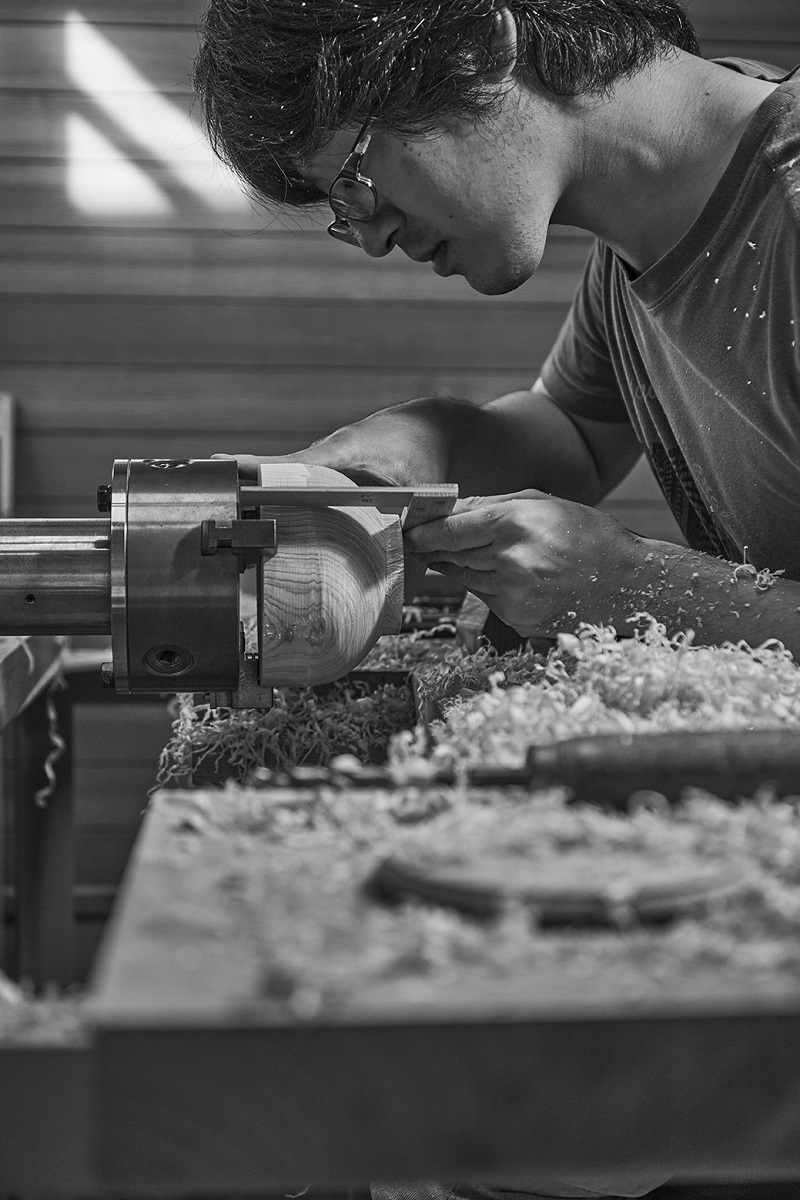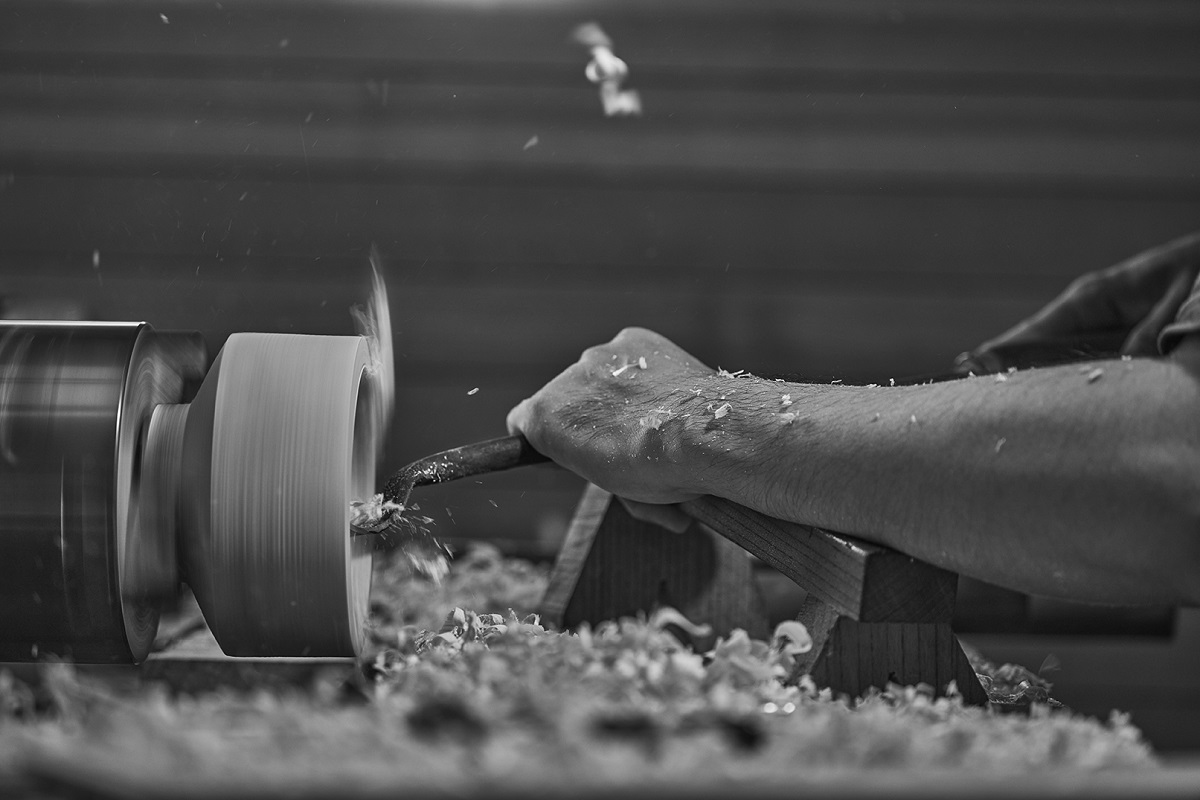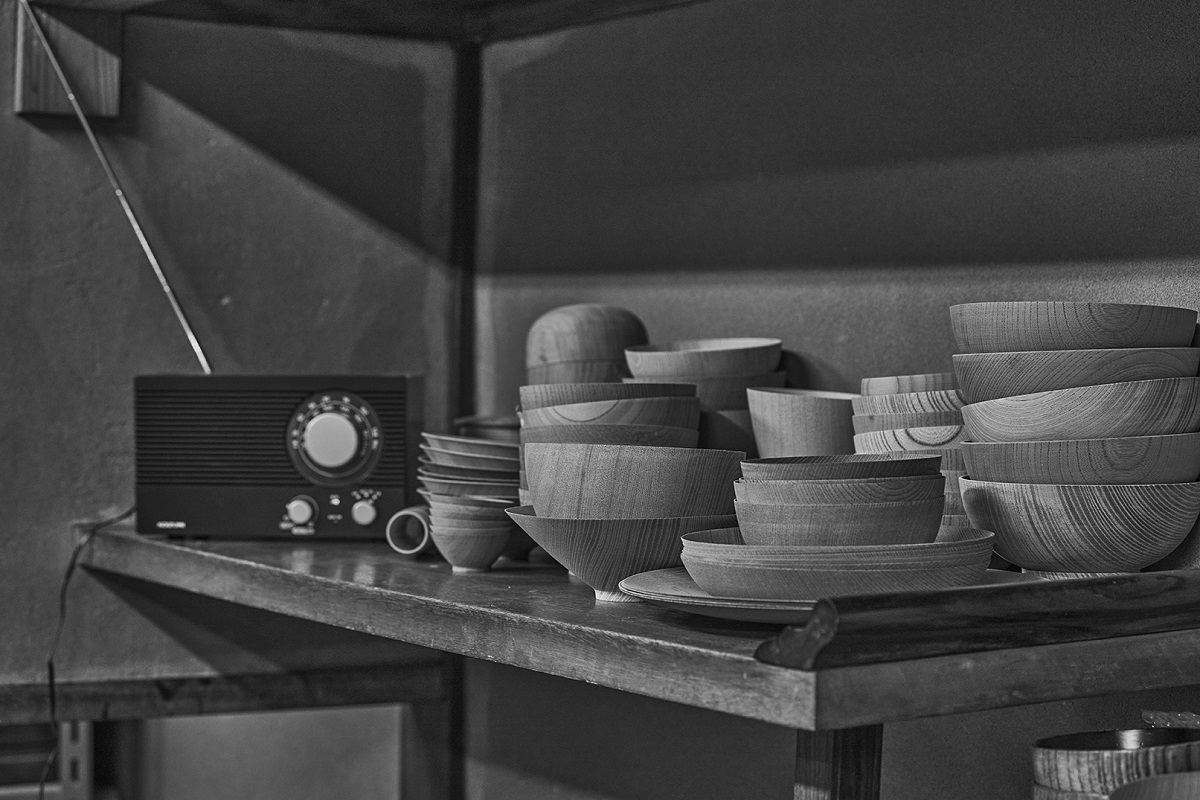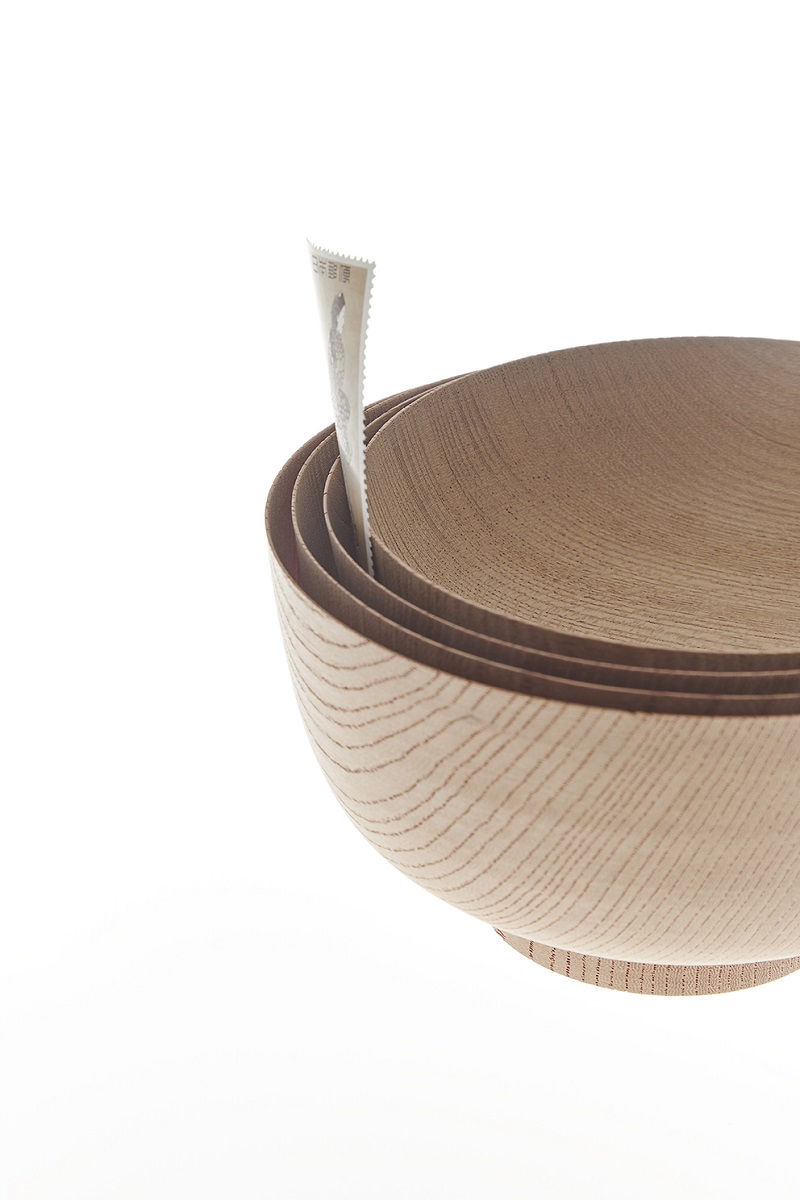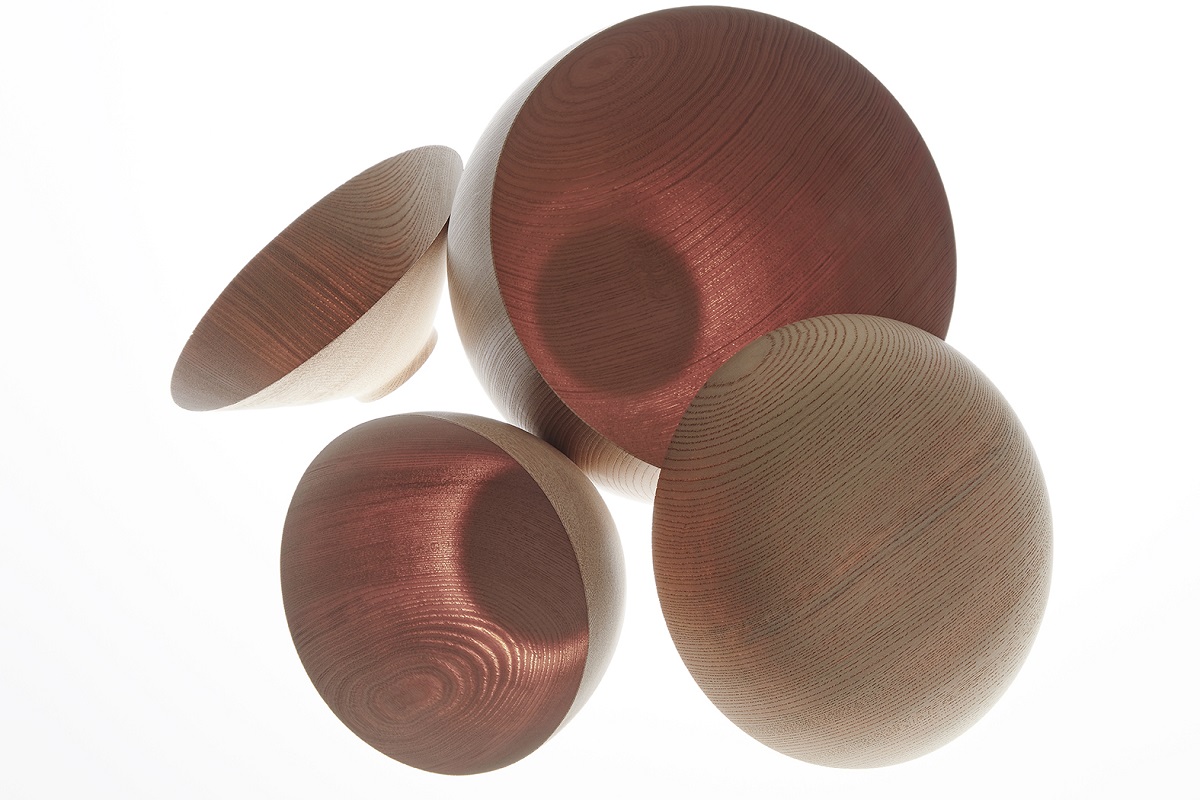STUDIO
We have several young apprentices working in the studio. We have two divisions, the lacquering department and the woodwork department. Since Naoki Nishimura was the only one who could shape the Kyo-nuri, we were keen to train woodworkers. Thanks to his guidance, we were able to create an in-house woodworking team. We believe that only by producing both the wood and the lacquer in our Kyoto studio can we call our products Kyo-nuri (a.k.a. Kyo-shikki). The division of labour in lacquerware can be difficult, but at our studio all of our craftspeople work side-by-side in the same space and this creates a sense of unity.
Initially we took on work that would provide our apprentices with a chance to refine their skills, but have expanded to creating a range of tableware under the brand ‘Tenun' which are designed for modern living. Other projects include a revival of a type of dish known as Asagi-wan, which was once made in Kyoto during the Edo period. We have also collaborated with companies who share our ethos producing works such as ‘Karasuma’.
The Asagi-wan restoration project was special in that it allowed us to reconnect the practice of craft and nature, planting urushi and other trees used in our work in Keihoku and Ohara. Not only do we make lacquerware, but we also respect it by acknowledging that human beings are also part of nature. I would like to pass on the culture of urushi and life with urushi to the next generation.
